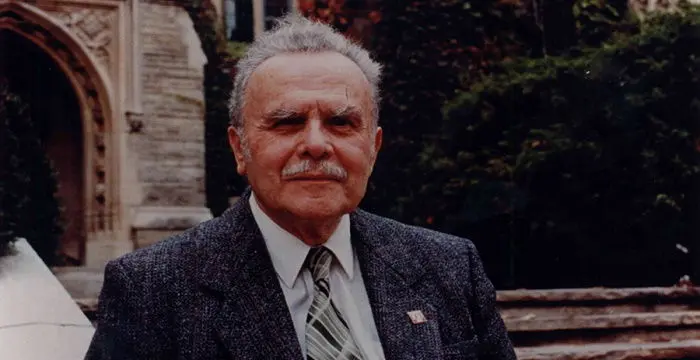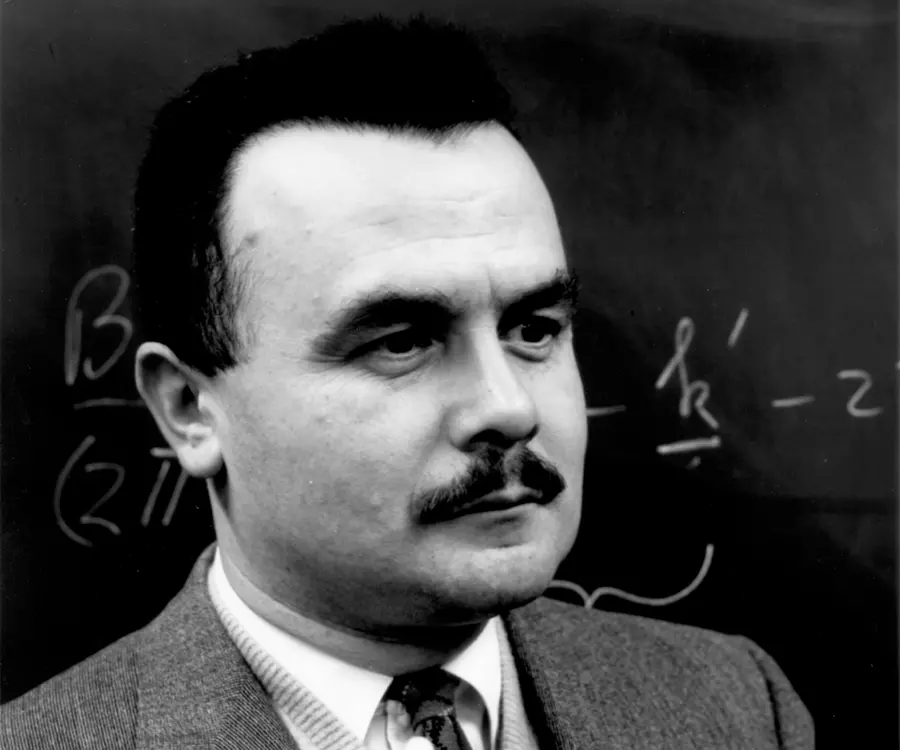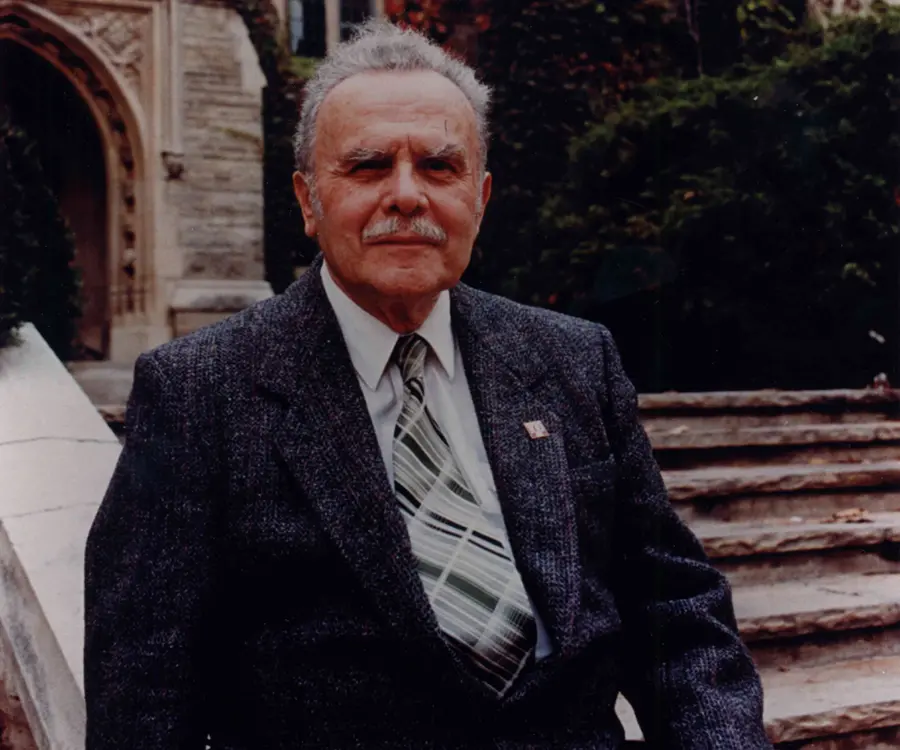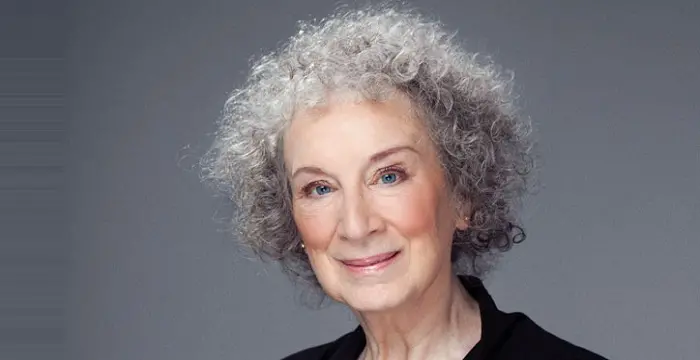
Bertram Brockhouse - Scientists, Career and Family
Bertram Brockhouse's Personal Details
Bertram Brockhouse was a Nobel Prize-winning Canadian physicist who is remembered for his development of the neutron-scattering technique
| Information | Detail |
|---|---|
| Birthday | July 15, 1918 |
| Died on | October 13, 2003 |
| Nationality | Canadian |
| Famous | University Of Toronto, Scientists, Physicists |
| Spouses | Doris Miller |
| Known as | Bertram Neville Brockhouse |
| Universities |
|
| Notable Alumnis |
|
| Birth Place | Lethbridge, Alberta, Canada |
| Gender | Male |
| Father | Israel Bertram Brockhouse |
| Mother | Mable Emily Brockhouse |
| Sun Sign | Cancer |
| Born in | Lethbridge, Alberta, Canada |
| Famous as | Physicist |
| Died at Age | 85 |
// Famous Scientists
Juliane Koepcke
Juliane Koepcke is a German-Peruvian biologist, who was the lone survivor among the 92 passengers and crew of the ill-fated LANSA Flight 508 that crashed in the Peruvian rainforest on 24 December 1971. Know more about her life in this biography.
Henry Cavendish
Henry Cavendish was a theoretical chemist and physicist, renowned for discovery of hydrogen and calculation of the mass of earth. To know more about his childhood, profile, timeline and career read on
Konstantin Tsiolkovsky
Konstantin Tsiolkovsky was a Russian rocket scientist and a pioneer of astronautics. This biography provides detailed information about his childhood, family, personal life, career, achievements, etc.
Bertram Brockhouse's photo
Who is Bertram Brockhouse?
Bertram Brockhouse was a Canadian physicist who was felicitated with Nobel Prize in Physics in 1994 for his pioneering research and development of the neutron-scattering technique. Brockhouse shared the prize with Clifford G Shull who did similar research although independently of Brockhouse. Brockhouse’s stint with physics began when he was in high school. His interest in the subject was only augmented by the passing years as he gained higher education at the University of British Columbia and later at the University of Toronto. Brockhouse’s most ground-breaking research came in neutron-scattering techniques. Contrasting to the general technique wherein a beam of neutrons aimed at a target material leading to the scattering of the neutrons yielding information about that material’s atomic structure, in Brockhouse’s technique (called inelastic neutron scattering), the relative energies of the scattered neutrons were measured to yield additional data. He used it in his revolutionary examination of phonons. He also developed the neutron spectrometer and was one of the first to measure the phonon dispersion curve of a solid.
// Famous Physicists
Henry Cavendish
Henry Cavendish was a theoretical chemist and physicist, renowned for discovery of hydrogen and calculation of the mass of earth. To know more about his childhood, profile, timeline and career read on
Walter Kohn
Nobel Laureate Walter Kohn was an Austrian-born American theoretical chemist and physicist. Check out this biography to know about his childhood, life, achievements, works & timeline.
Nikola Tesla
Nikola Tesla was a Serbian-American inventor, best known for his development of alternating current electrical systems. This biography of Nikola Tesla provides detailed information about his childhood, life, achievements, works & timeline.
Childhood & Early Life
Bertram Neville Brockhouse was born July 15, 1918 in Lethbridge, Alberta, Canada to Israel Bertram Brockhouse and Mable Emily Brockhouse. He had a sister Alice Evelyn and a brother Gordon Edgar who eventually became a railroad civil engineer.
The Brockhouse family shifted to United States when young Bertram was two years old. However in the winter of 1926-27, the family shifted back to Vancouver, BC.
Brockhouse’s gained his early education from a string of schools starting from the Central and then Lord Roberts elementary school, eventually enrolling at the King George High School and finally Sunday School of St John’s United Church.
During the Great Depression, Brockhouse family that was already suffering from low-slung financial statusdrained further down.Hoping for better opportunities, they shifted to Chicago where Brockhouse enrolled at the Central YMCA College for an evening course.
His love for radios was initiated by his cousin Wilbert B Smith. Taking it further, at YMCA he learned the technical aspects of radio technology, designing, building and repairing them. Meanwhile, for livelihood, he worked as a lab assistant at Aubert Controls Corporation, a small electronic firm. He also started a small business enterprise of repairing radio sets.
In 1938, the Brockhouse family returned to Vancouver. He continued with his business of repairing radio sets before joining the Royal Canadian Navy in 1939 at the outbreak of World War II.
In 1944, he enrolled for a six-month course in Electrical Engineering at Nova Scotia Technical College. Following this, he was recruited as an Electrical Sub-Lieutenant at the National Research Council in Ottawa.
In September 1945, Brockhouse was relieved off his military duties. Subsequently, he enrolled at the University of British Columbia studying physics and mathematics. In 1946, he took up a summer job at the National Research Council laboratory in Ottawa.
Following his stint at the NRC lab, he moved to Low Temperature Laboratory at the University of Toronto. At the university, he also applied for his PhD program under the guidance of Professor Hugh Grayso Smith and James Reekie. He worked on the effects of stress and temperature on ferro-magnetism. Meanwhile he gained his Master’s degree in 1948. Two years later, he received his PhD from the University of Toronto.
In 1950, Brockhouse accepted the offer to work at the Chalk River Nuclear Laboratory, a facility operated by Atomic Energy of Canada where he was work in Don Hurst’s neutron physics group. Thought originally intending to stay for a few years, Brockhouse’s association with the laboratory extended for 12-long years. Also, it was therein that he conducted his award-winning research.
At Chalk River Nuclear Laboratory, the first experiment that Brockhouse studied was scattering of the neutrons by highly absorbing elements. It was the first quantitative experiment in slow neutron spectroscopy
For a year, Brockhouse was invited to the Brookhaven National Laboratory where he worked on several experiments, though not indulging in any spectroscopic work. He also met several other physicists who helped him learn about new methods and new generalized correlationsabout inelastic scattering.
Returning to NRX in February 1954, Brockhouse resumed his experimental duties. Following year, he presented a paper with substantial results showing the functioning of the triple-axis spectrometer at the American Physical Society meeting in New York.
In 1956, Brockhouse completed the first true Triple-Axis crystal spectrometer, though only foroperation at constant incoming energy. The flexibility of the operation and the accuracy of the result were greatly improved.
In 1958, he invented the Constant Q Method. Same year, a new apparatus that allowed operation with variable incoming energy was installed at the new high-flux reactor NRU. It was by 1959 that the triple-axis spectrometer reached full development. He was joined by renowned physicists of various countries.
In 1956, Alex Stewart completed the Filter-Chopper apparatus that was used in experiments involving Aluminium and vanadium. However, in the absence of Stewart, Brockhouse converted the instrument to Rotating Crystal Spectrometer. It was primarily used to study liquids and polycrystals.
Apart from completing the Triple Axis spectrometer or inventing the Constant Q Method, Brockhouse took three more technological initiatives. He cooled filters of large single-crystal which enabled major improvementin the ratio of slow neutrons to fast in the primary beam and thus in the signal to background ratio.
Brockhouse developed the‘Beryllium Detector’ method through which he enabled the Triple-Axis spectrometer to accept Beryllium polycrystalline filters in the scattered beam. The method allowed incoming neutrons of variable energy, to get energy distributions in a different and sometimes advantageous manner. The method was an inverse of the Filter-Chopper method. He also developed uses of the new material, pyrolitic graphite
In 1958, Brockhouse took his maiden trip to England and Europe. Therein, he attended several conferences, colloquia, meetings and seminars, presenting his paper on his research and finding. His trip was largely inspirational and proved to be a great learning experience.
In 1962, Brockhouse realized his long-withstanding dream of pursuing a university career by accepting the position of Professor of Physics at the McMaster University. The university allowed him easy transition from academics to research and back to academics. Also, it allowed him to start a research program based on his findings in the field of neutron scattering. He remained there until his retirement in 1984.
During the 1970s, Brockhouse re-routed his interest towards the philosophy of physics and energy supply and the economics and ethics. He completely left neutron scattering in 1979.
Major Works
Brockhouse most spectacular achievement came while he carried out his research at the Atomic Energy of Canada’s Chalk River Nuclear Laboratory. He made pioneering contribution to the development of neutron scattering techniques and also in the development of neutron spectroscopy. Generally, in neutron-scattering technique, a beam of neutrons is aimed at a target material, and the resultant scattering of the neutrons yields information about that material’s atomic structure. Brockhouse developed a different technique wherein the relative energies of the scattered neutrons were measured to yield additional data. This method was called inelastic neutron scattering. He used it in his ground-breaking examination of phonons. He also developed the neutron spectrometer and was one of the first to measure the phonon dispersion curve of a solid.
Awards & Achievements
In 1962, Brockhouse was felicitated with the Oliver E Buckley Condensed Matter Prize. Following year, he received the Duddell Medal and Prize.
In 1965, Brockhouse was elected as a Fellow of the Royal Society (FRS).
In 1973, Brockhouse won the Henry Marshall Tory Medal.
In 1982, Brockhouse was made an Officer of the Order of Canada and was promoted to Companion in 1995.
In 1994, Brockhouse received the prestigious Nobel Prize in Physics for developing neutron scattering techniques for studying condensed matter. He shared the prize with American physicist Clifford Shull who independently carried out similar workconcurrently.
Personal Life & Legacy
Brockhouse first met Doris Miller at the National Research Council in Ottawa. The two eventually got married in May 1947. Dorie, as she was fondly called, bore him six children. She supported and encouraged Brockhouse throughout his research years.
Brockhouse suffered from serious medical ailments starting 1960s. His medical problems caused him discomfort in his later life.
Brockhouse breathed his last on October 13, 2003 in Hamilton Ontario. He was 85.
Combined efforts by the Division of Condensed Matter and Materials Physics (DCMMP) and the Canadian Association of Physicists (CAP) led to the creation of a medal in honour of Brockhouse in 1999. The medal, popularly known as Brockhouse Medal, is awarded to recognize and encourage outstanding experimental or theoretical contributions to condensed matter and materials physics. It is awarded annually to a scientist who performsthe research with a Canadian Institution.
To mark his legacy, in 2005, as a part of McMaster University's 75th anniversary celebration, a street on the University campus (University Avenue) in Hamilton, Ontario, was renamed to Brockhouse Way to honor his contribution in the field of physics. Furthermore, the town of Deep River, Ontario also named a street in his honour.
// Famous University Of Toronto
Walter Kohn
Nobel Laureate Walter Kohn was an Austrian-born American theoretical chemist and physicist. Check out this biography to know about his childhood, life, achievements, works & timeline.
Stephen Lewis
Stephen Lewis is a Canadian politician, broadcaster, diplomat and professor. This biography profiles his childhood, career, works, life, achievements and timeline.
Margaret Atwood
Margaret Atwood is a Canadian writer, best known for her novels, short stories and poems. This biography of Margaret Atwood provides detailed information about her childhood, life, achievements, works & timeline.
Bertram Brockhouse's awards
| Year | Name | Award |
|---|---|---|
Other | ||
| 0 | Henry Marshall Tory Medal (1973) | |
| 0 | Nobel Prize in Physics (1994) | |
| 0 | Oliver E. Buckley Condensed Matter Prize (1962) | |
| 0 | Duddell Medal and Prize (1963) | |
| 0 | FRS (1965) | |
Bertram Brockhouse biography timelines
- // 15th Jul 1918Bertram Neville Brockhouse was born July 15, 1918 in Lethbridge, Alberta, Canada to Israel Bertram Brockhouse and Mable Emily Brockhouse. He had a sister Alice Evelyn and a brother Gordon Edgar who eventually became a railroad civil engineer.
- // 1926The Brockhouse family shifted to United States when young Bertram was two years old. However in the winter of 1926-27, the family shifted back to Vancouver, BC.
- // 1938 To 1939In 1938, the Brockhouse family returned to Vancouver. He continued with his business of repairing radio sets before joining the Royal Canadian Navy in 1939 at the outbreak of World War II.
- // 1944In 1944, he enrolled for a six-month course in Electrical Engineering at Nova Scotia Technical College. Following this, he was recruited as an Electrical Sub-Lieutenant at the National Research Council in Ottawa.
- // Sep 1945 To 1946In September 1945, Brockhouse was relieved off his military duties. Subsequently, he enrolled at the University of British Columbia studying physics and mathematics. In 1946, he took up a summer job at the National Research Council laboratory in Ottawa.
- // May 1947Brockhouse first met Doris Miller at the National Research Council in Ottawa. The two eventually got married in May 1947. Dorie, as she was fondly called, bore him six children. She supported and encouraged Brockhouse throughout his research years.
- // 1948Following his stint at the NRC lab, he moved to Low Temperature Laboratory at the University of Toronto. At the university, he also applied for his PhD program under the guidance of Professor Hugh Grayso Smith and James Reekie. He worked on the effects of stress and temperature on ferro-magnetism. Meanwhile he gained his Master’s degree in 1948. Two years later, he received his PhD from the University of Toronto.
- // 1950In 1950, Brockhouse accepted the offer to work at the Chalk River Nuclear Laboratory, a facility operated by Atomic Energy of Canada where he was work in Don Hurst’s neutron physics group. Thought originally intending to stay for a few years, Brockhouse’s association with the laboratory extended for 12-long years. Also, it was therein that he conducted his award-winning research.
- // Feb 1954Returning to NRX in February 1954, Brockhouse resumed his experimental duties. Following year, he presented a paper with substantial results showing the functioning of the triple-axis spectrometer at the American Physical Society meeting in New York.
- // 1956In 1956, Brockhouse completed the first true Triple-Axis crystal spectrometer, though only foroperation at constant incoming energy. The flexibility of the operation and the accuracy of the result were greatly improved.
- // 1956In 1956, Alex Stewart completed the Filter-Chopper apparatus that was used in experiments involving Aluminium and vanadium. However, in the absence of Stewart, Brockhouse converted the instrument to Rotating Crystal Spectrometer. It was primarily used to study liquids and polycrystals.
- // 1958 To 1959In 1958, he invented the Constant Q Method. Same year, a new apparatus that allowed operation with variable incoming energy was installed at the new high-flux reactor NRU. It was by 1959 that the triple-axis spectrometer reached full development. He was joined by renowned physicists of various countries.
- // 1958In 1958, Brockhouse took his maiden trip to England and Europe. Therein, he attended several conferences, colloquia, meetings and seminars, presenting his paper on his research and finding. His trip was largely inspirational and proved to be a great learning experience.
- // 1962 To 1984In 1962, Brockhouse realized his long-withstanding dream of pursuing a university career by accepting the position of Professor of Physics at the McMaster University. The university allowed him easy transition from academics to research and back to academics. Also, it allowed him to start a research program based on his findings in the field of neutron scattering. He remained there until his retirement in 1984.
- // 1962In 1962, Brockhouse was felicitated with the Oliver E Buckley Condensed Matter Prize. Following year, he received the Duddell Medal and Prize.
- // 1965In 1965, Brockhouse was elected as a Fellow of the Royal Society (FRS).
- // 1973In 1973, Brockhouse won the Henry Marshall Tory Medal.
- // 1979During the 1970s, Brockhouse re-routed his interest towards the philosophy of physics and energy supply and the economics and ethics. He completely left neutron scattering in 1979.
- // 1982 To 1995In 1982, Brockhouse was made an Officer of the Order of Canada and was promoted to Companion in 1995.
- // 1994In 1994, Brockhouse received the prestigious Nobel Prize in Physics for developing neutron scattering techniques for studying condensed matter. He shared the prize with American physicist Clifford Shull who independently carried out similar workconcurrently.
- // 1999Combined efforts by the Division of Condensed Matter and Materials Physics (DCMMP) and the Canadian Association of Physicists (CAP) led to the creation of a medal in honour of Brockhouse in 1999. The medal, popularly known as Brockhouse Medal, is awarded to recognize and encourage outstanding experimental or theoretical contributions to condensed matter and materials physics. It is awarded annually to a scientist who performsthe research with a Canadian Institution.
- // 13th Oct 2003Brockhouse breathed his last on October 13, 2003 in Hamilton Ontario. He was 85.
- // 2005To mark his legacy, in 2005, as a part of McMaster University's 75th anniversary celebration, a street on the University campus (University Avenue) in Hamilton, Ontario, was renamed to Brockhouse Way to honor his contribution in the field of physics. Furthermore, the town of Deep River, Ontario also named a street in his honour.
// Famous Cancer Celebrities peoples
Jacob Elordi
Jacob Elordi is an Australian actor. Let’s take a look at his childhood, family, personal life, career, etc.
Riele Downs
Riele Downs is a Canadian-American actress & Musical.ly star. Let’s take a look at her family and personal life including age, birthday, net worth, boyfriends and fun facts.
Yammy Xox
Check out all that you wanted to know about Yammy Xox, the famous British YouTube Personality; her birthday, her family and personal life, her boyfriends, fun trivia facts and more.
Kaylee Quinn
Kaylee Quinn is an American dancer, model, and actress. Let’s have a look at her family and personal life including age, date of birth, net worth, relationships, and fun facts.
Sophia Montero
Sophia Montero is an American singer and YouTuber. Let’s have a look at her family and personal life including age, date of birth, net worth, relationships, and fun facts.
Domo Wilson
Check out all that you wanted to know about Domo Wilson, the famous American Vlogger & YouTube Personality; her birthday, her family and personal life, fun trivia facts and more.
Bertram Brockhouse's FAQ
What is Bertram Brockhouse birthday?
Bertram Brockhouse was born at 1918-07-15
When was Bertram Brockhouse died?
Bertram Brockhouse was died at 2003-10-13
Where was Bertram Brockhouse died?
Bertram Brockhouse was died in Hamilton, Ontario, Canada
Which age was Bertram Brockhouse died?
Bertram Brockhouse was died at age 85
Where is Bertram Brockhouse's birth place?
Bertram Brockhouse was born in Lethbridge, Alberta, Canada
What is Bertram Brockhouse nationalities?
Bertram Brockhouse's nationalities is Canadian
Who is Bertram Brockhouse spouses?
Bertram Brockhouse's spouses is Doris Miller
What was Bertram Brockhouse universities?
Bertram Brockhouse studied at University Of Toronto
What was Bertram Brockhouse notable alumnis?
Bertram Brockhouse's notable alumnis is University Of Toronto
Who is Bertram Brockhouse's father?
Bertram Brockhouse's father is Israel Bertram Brockhouse
Who is Bertram Brockhouse's mother?
Bertram Brockhouse's mother is Mable Emily Brockhouse
What is Bertram Brockhouse's sun sign?
Bertram Brockhouse is Cancer
How famous is Bertram Brockhouse?
Bertram Brockhouse is famouse as Physicist














